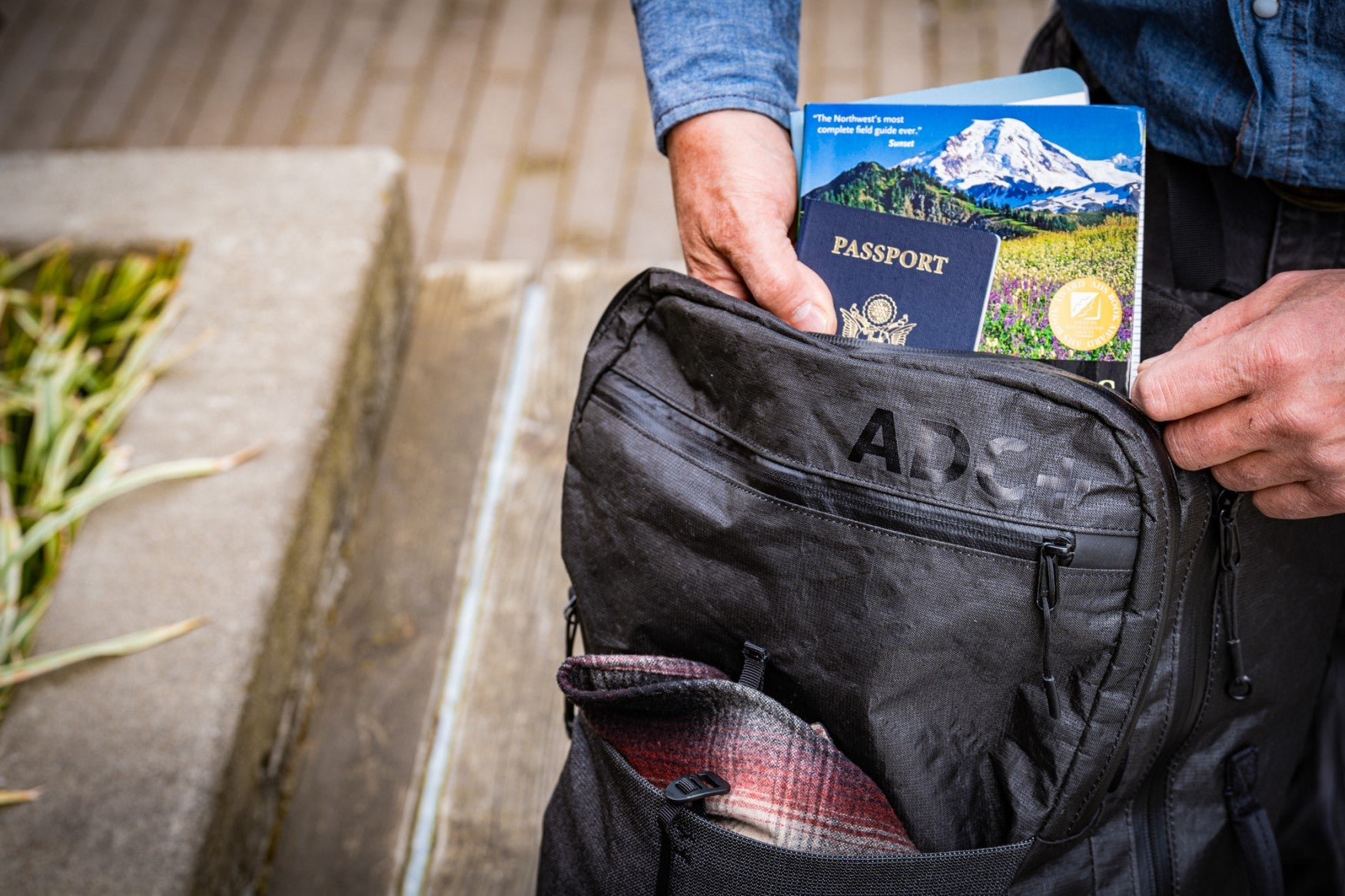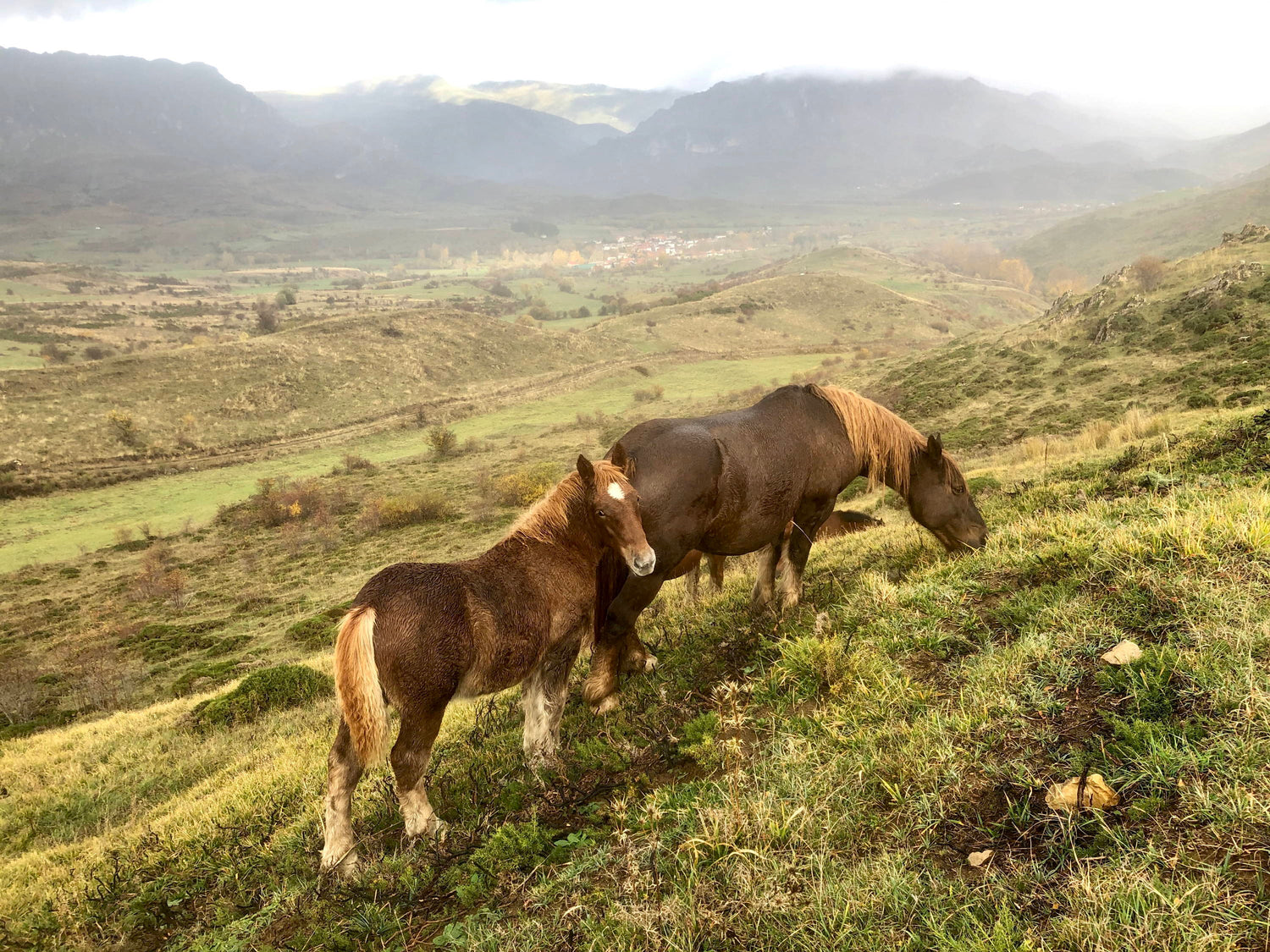PART ONE: Introducing the Camino de Santiago
Unlike other long-distance trails, the ‘Camino de Santiago’ is not just a single route. It is a 1,000-year-old network of European paths for pilgrims to travel towards the city of Santiago de Compostela in the northwest corner of Spain. There has been a revival in our modern age to re-trace the historic routes from all over Europe.
Typical traffic Jam on the Camino de Santiago.
CAMINO HISTORY
According to tradition, the remains of St. James the Greater (Santiago) were buried in Spain after his martyrdom in Jerusalem. Almost 900 years later a shrine was built after a shepherd re-discovered the grave.
This corner of the Iberian Peninsula was once thought of as the edge of the world. The nearby coastal town of Finisterre is taken from two Latin words meaning “end” and “earth”. Pilgrims from ancient civilizations such as the Celts and Romans were drawn to travel there long before Christianity.
The first Camino shell marker on the Almeria Mozarabe Camino.
The first recorded ‘Camino de Santiago’ pilgrimage was by King Alfonso II in 841. That historic route from Oviedo in northern Spain is known today as the “Camino Primitivo” or the “Original Way”. As Moorish control in the Iberian Peninsula shifted, other routes became safer for Christian pilgrims.
Santiago de Compostela pilgrimages rapidly grew in popularity during the medieval centuries - with as many as 200,000 pilgrims annually. The faithful left directly from their doorstep and travelled by foot or horseback to pay their respects to St. James. Infrastructure along the pilgrim routes need to be built such as churches, hospitals, bridges, and castles for protection. As people from across Europe walked together, the Camino de Santiago also facilitated the cross-cultural exchange of knowledge and new ideas. During the unrest of the Protestant Reformation the popularity for the pilgrimage declined.
Camino de Santiago Compostela Certificate.
MODERN CAMINO REVIVAL
The modern pilgrimage was revived in the 1980s by Fr. Elías Valiña Sampedro, the parish priest of O Cebreiro. He painted bright yellows from Roncesvalles to Santiago de Compostela to guide walkers on their journey. The route became known today as the ‘Camino Frances’ because most people choose to start in the French town of St.Jean-Pied-de-Port on the other side of the Pyrenees mountains. The 780-km ’Camino Frances’ has been highlighted in popular culture such as Paulo Coehlo’s “The Pilgrimage”, and Martin Sheen’s 2010 film “The Way”.
One of the many gorgeous castles along the Ruta de la Lana Camino.
THE CAMINO TODAY
In 2019, close to 350,000 pilgrims registered at the Pilgrim Office to receive the completion certificate called the “Compostela”. The Compostela is issued to people who walk at least 100km (or cycle 200km) to the tomb of St. James. Pilgrims prove the distance by collecting stamps along their journey in a booklet called a “Credential del Peregrinos”. In addition to overnight accommodations, stamps can be collected from a variety of places such as churches, restaurants, and tourist offices.
Just like medieval times, infrastructure has been created for the modern-day pilgrims. A web of low-cost hostels called “albergues” are found across Spain and in many other European countries. These facilities usually offer a simple bed, hot shower, and basic kitchen. The albergues are run by a range of organizations such as local municipalities, religious orders, and private business.
Tricked by a mural! Sadly the village bakery was closed that Monday.
WHY DO PEOPLE WALK THE CAMINO DE SANTIAGO?
The idea of a sacred journey is a popular belief in many religions. Christians during the medieval period believed that a physical travel goal would reinstate faith. By leaving home and their worldly concerns behind, a pilgrim could achieve spiritual clarity. The ultimate pilgrimage destination was Jerusalem, but it was long, difficult, and expensive to reach. Traveling to Santiago de Compostela was within the means of ordinary Europeans wishing to see holy relics with their own eyes.
Beyond the spirit of pilgrimage, people walked the medieval Camino for a variety of reasons. The religious thought that their time in purgatory could be shortened by the purification of their souls. The ailing believed that the relics of Santiago had miraculous healing benefits. Criminals could be being sentenced to the pilgrimage as punishment instead of serving prison time. Wealthy patrons uninterested in taking the trip themselves would fund “professional walkers” to journey on their behalf.
Spiritual fulfillment continues to be one of the main motivations for pilgrims in our modern age. Other reasons may include a combination of physical challenge, personal self-growth, outdoor enthusiasm, cultural experiences, and historic tourism. The Camino is also very popular because it allows individuals without wilderness experience to participate in an epic long-distance journey. Planning the trip is relatively simple through a support network of Camino associations, internet forums, and guidebook publications. Another benefit is meeting and connecting with like-minded individuals from all over the world.
Snowy hiking on the Camino Primitivo.
Wild horses spotted on the Camino San Salvador.
PART TWO: How to Choose a Camino de Santiago Route
PART THREE: Essential Camino de Santiago Planning Tips (coming soon...)
The medieval bridge of Simancas along the Camino de Madrid.
About the author:
Sara Dhooma became addicted to walking the Camino de Santiago after completing the “Camino Frances” in 2014. She has walked thousands of miles on 19 Camino routes including the Camino Portuguese, Camino de Madrid, and the Camino Primitivo.
To learn more about Sara’s Camino de Santiago adventures visit her YouTube channel: www.youtube.com/saradhooma .
One of the many waterways to cross in lush Galicia.
Muddy hiking along the river valley on the Camino de Invierno.
The end of my journey! Arriving at the St. James Cathedral in Santiago de Compostela.










Leave a comment
This site is protected by hCaptcha and the hCaptcha Privacy Policy and Terms of Service apply.